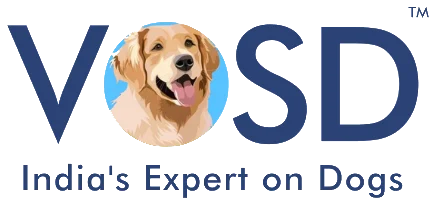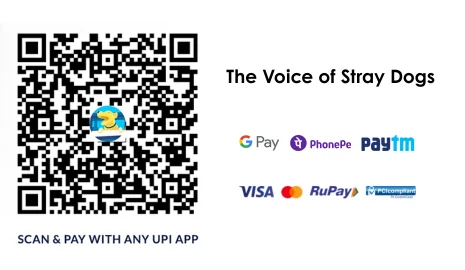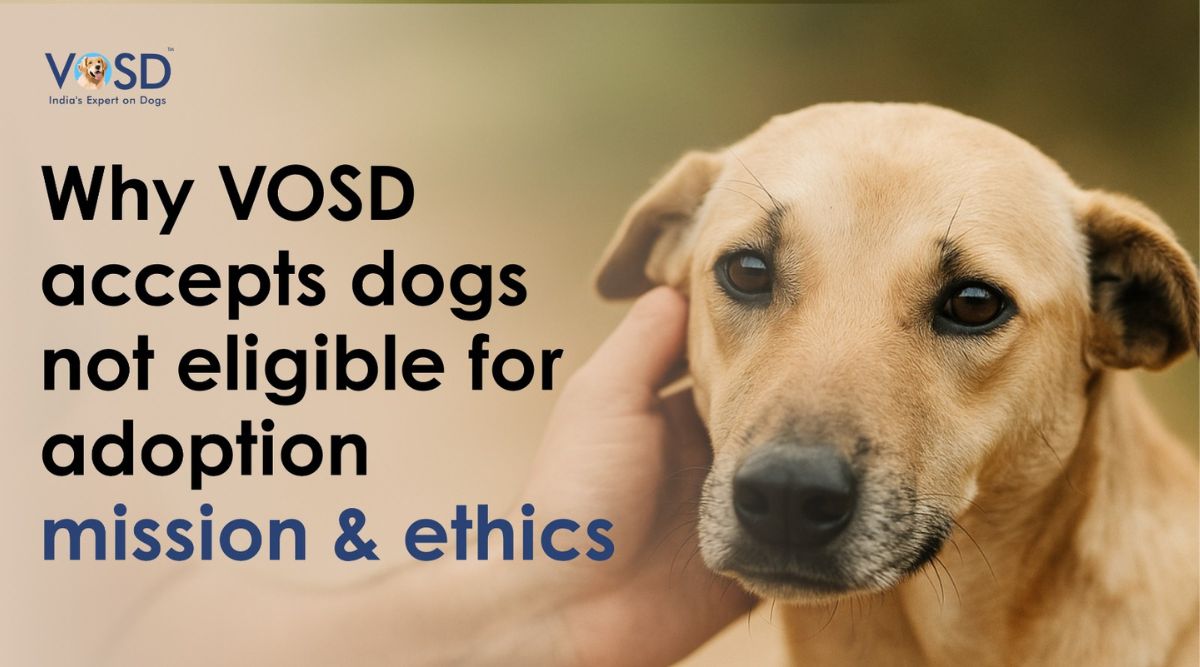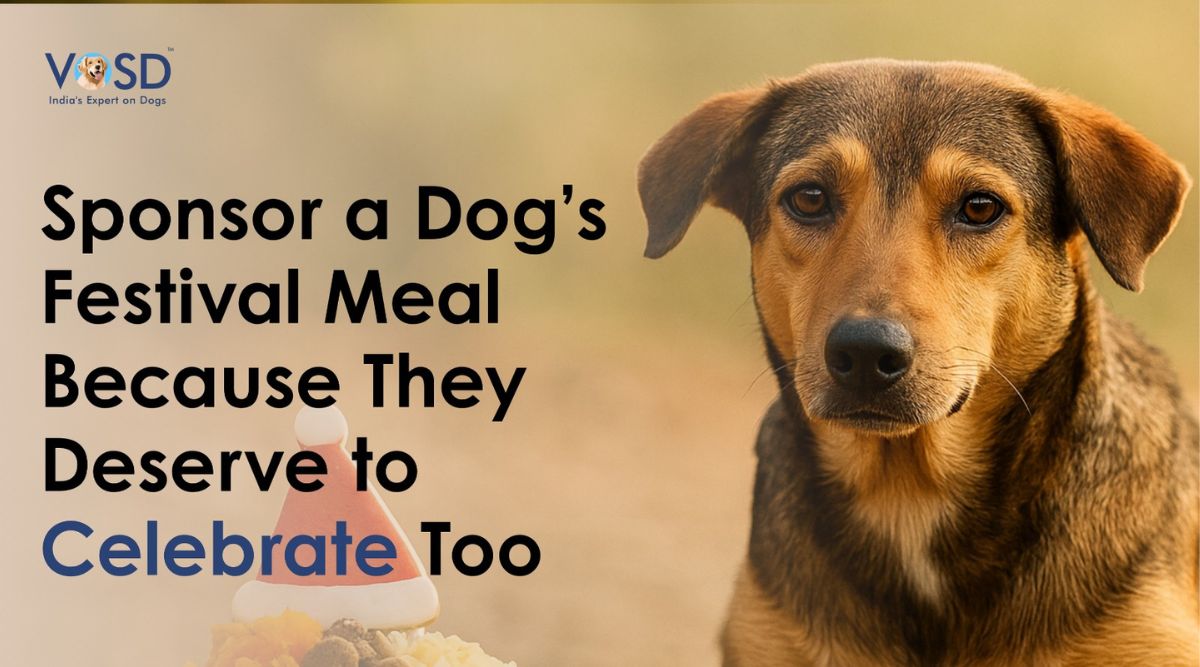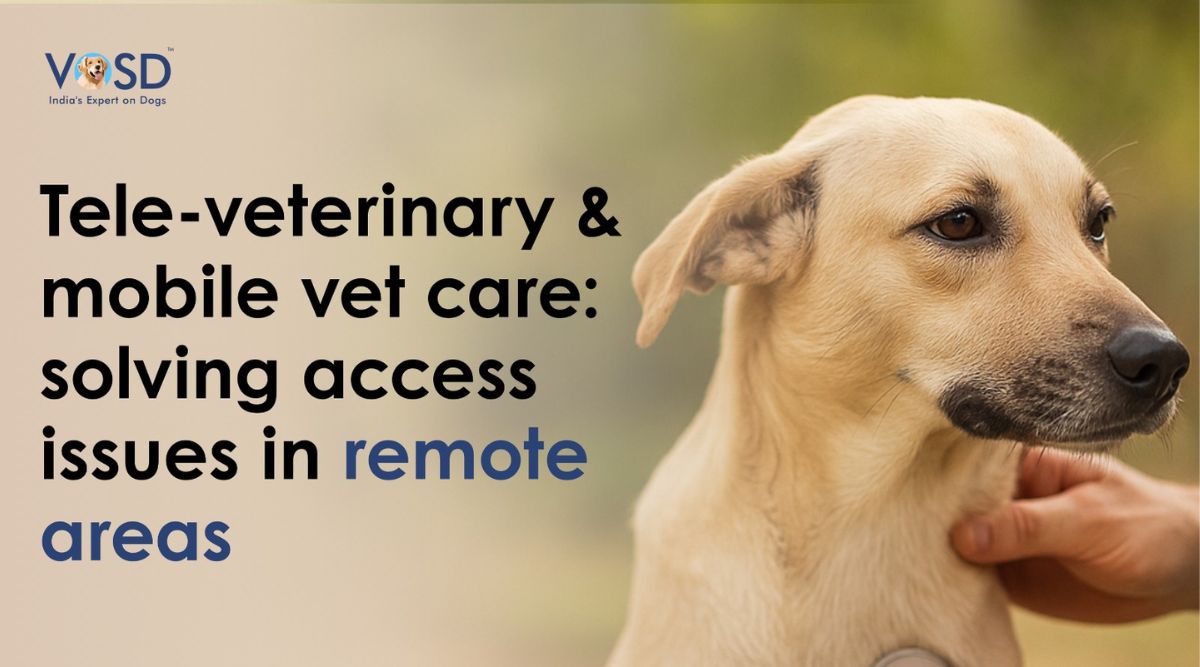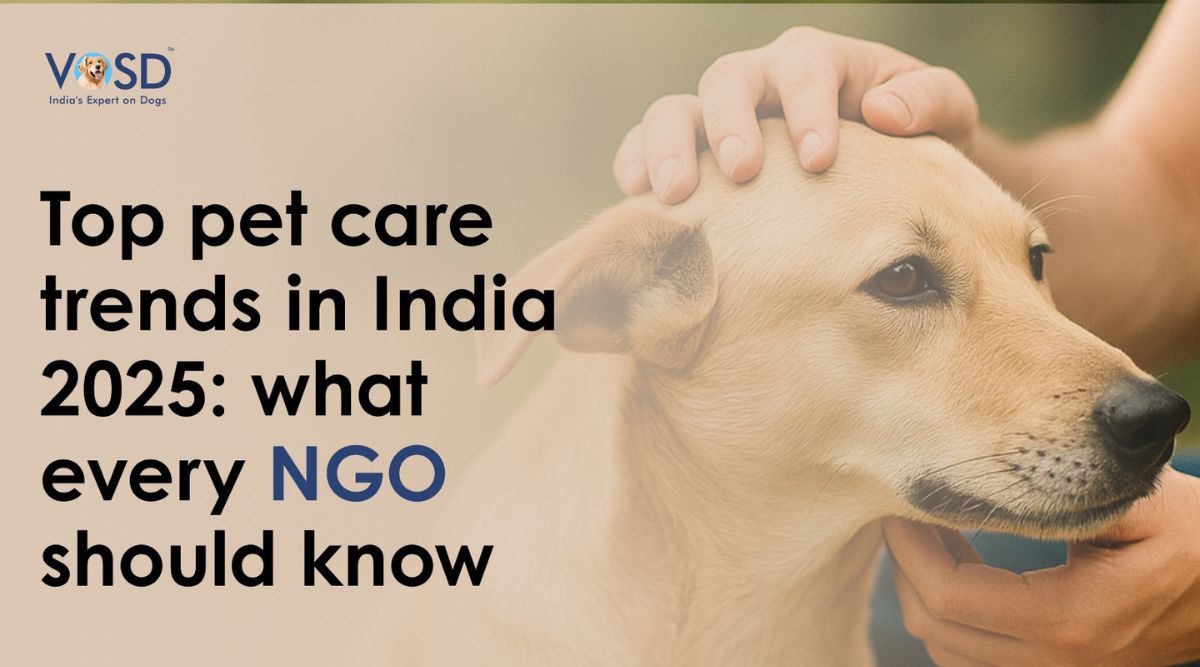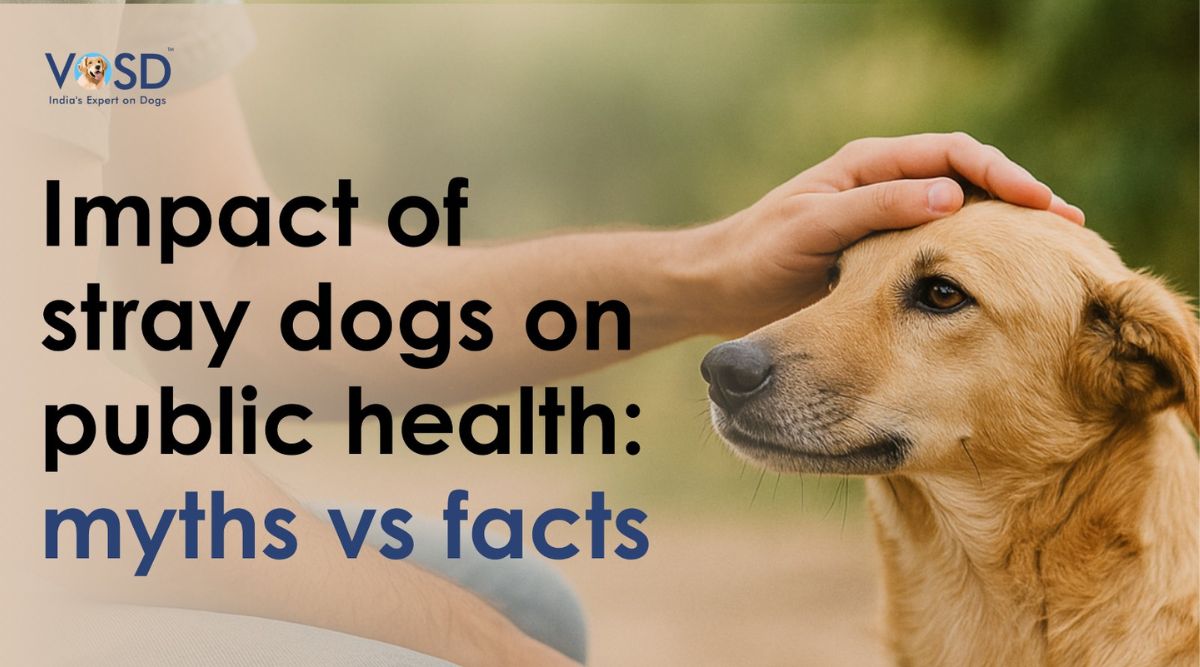Introduction
When you surrender a dog to VOSD – The Voice of Stray Dogs, you’re not giving up on them; you’re giving them a forever home inside India’s largest and most trusted no-kill, lifetime sanctuary. From the moment your dog arrives, VOSD’s team of veterinarians and caregivers take over their complete medical, emotional, and physical well-being — for life.
Unlike ordinary shelters or NGOs that rehome or put dogs up for adoption, VOSD never adopts out or euthanises. Every surrendered dog becomes a permanent resident, receiving daily care, medical support, and love within a peaceful, purpose-built environment near Bengaluru.
This guide walks you through the entire surrender process — step by step:
- How to check if your dog qualifies
- What happens after VOSD approves the surrender
- The full intake-to-integration timeline
- What you can expect (and not expect) once your dog joins the sanctuary
By the end, you’ll have total clarity on how VOSD ensures lifetime dignity, safety, and comfort for every dog — and how your act of surrender can still be an act of compassion.
Before You Surrender: Eligibility and Readiness
Surrendering a dog to VOSD is a permanent and final decision. The sanctuary accepts only dogs who genuinely have no other safe option and provides them with lifetime care within a no-kill environment in line with Animal Welfare Board of India guidelines.. Before starting the process, it’s important to confirm that your dog qualifies and that you understand the associated fee, conditions, and emotional responsibility involved.
1. Check if Your Dog Qualifies
VOSD accepts dogs that fall into specific categories based on medical, behavioural, or situational need. Each category carries a mandatory one-time surrender fee, which supports the dog’s intake, medical evaluation, and rehabilitation.
Eligible categories include:
- Pet Dog / Rescued Stray Dog – Domestic or rescued stray dogs that can no longer be safely cared for or released.
- Aggressive Pet / Stray Dog – Dogs with long-term aggression or behaviour issues that make rehoming unsafe.
- Breeder-Abandoned Dogs – Animals discarded or neglected by breeders after use.
- Special Needs Dogs – Paralysed, disabled, or chronically ill dogs requiring lifelong support.
- Failed Adoption Dogs – Dogs rejected or returned due to medical or behavioural issues.
- Retired Service / Patriot Dogs – Former army, police, or security dogs retired from active duty.
- Terminally Ill Pet Parent Dogs – Dogs whose guardians are terminally ill and unable to continue care.
- Blind Stray Dogs – Vision-impaired dogs unable to survive outdoors.
- Cruelty Survivor Dogs – Dogs rescued from abuse, neglect, or trauma.
- Old Stray Dogs for VOSD Hospice – Senior or weak strays that can no longer survive on the streets.
These categories ensure that VOSD’s limited capacity and lifetime commitment are reserved for dogs with no alternative path to safety.
2. Explore Other Options First
VOSD functions as a last-resort sanctuary. Before submitting a surrender request, pet owners and rescuers are urged to explore local rehoming, fostering, or adoption opportunities. The organisation’s mission is to protect dogs that have exhausted all other options.
3. Medical Stability and Transport Readiness
Dogs must be medically stable for transfer. VOSD is not an emergency rescue facility, so dogs in critical condition should first receive treatment and stabilisation at a veterinary hospital. Once stable, they can be accepted into the sanctuary for lifetime care.
4. Submitting a Request
Begin the surrender process through VOSD’s Helpdesk or by emailing info@vosd.in. Provide:
- Clear photos of the dog
- Medical history and vaccination records
- Reason for surrender and category under which the dog qualifies
After review, VOSD will confirm acceptance, specify the surrender fee, and provide instructions for scheduling admission. No dog should be transported without written approval from the VOSD intake team.
5. Documentation and Travel Preparation
Before travel, prepare all required paperwork — vaccination card, medical reports, surrender letter, and valid ID proof. Ensure safe transport with ventilation, water, and food. If you are outside Karnataka, VOSD can help you identify verified animal transport partners.
6. Emotional Readiness
Surrendering your dog means transferring full guardianship to VOSD. Once admitted, the dog becomes a permanent resident of the sanctuary — there is no visitation, reclaiming, or adoption policy. Many guardians find peace of mind by continuing as sponsors or donors, knowing that their dog remains safe, cared for, and loved for life.
Cost and Commitment Transparency
Every dog accepted into VOSD enters a lifetime care system that requires significant resources and planning. To support this, VOSD applies a mandatory, one-time surrender fee for all categories of surrender. This policy ensures each dog’s admission, medical assessment, and initial rehabilitation are funded responsibly.
Surrender Fee (Mandatory and Non-Refundable):
All categories of surrender require a one-time payment at the time of approval. Once the fee is paid and the surrender process has begun, the payment is non-refundable. This covers initial administrative, medical, and logistical costs that are immediately incurred once intake preparation starts.
Purpose of the Fee:
The surrender fee contributes to the costs of registration, health checks, vaccination, deworming, documentation, transport coordination, and the initial settling phase. After this, VOSD assumes full financial responsibility for the dog’s lifetime care.
Lifetime Care Commitment:
Once admitted, your dog’s food, housing, medical care, and daily needs are entirely managed by VOSD. There are no recurring payments or future financial obligations for the person surrendering the dog.
Transparency of Scale:
VOSD shares that the average cost of caring for a single dog over its lifetime — food, veterinary treatment, and upkeep — is approximately ₹10–15 lakhs over 10 years. This figure is not a charge; it reflects the organisation’s commitment to long-term, no-kill care standards.
Non-Profit and Accountability:
VOSD operates as a registered non-profit trust under 12A and FCRA compliance, ensuring full transparency in fund utilisation and welfare operations.
Optional Sponsorship:
While the surrender fee completes your responsibility, many guardians choose to sponsor their dog or other residents voluntarily. Sponsorships directly support ongoing food, shelter, and healthcare costs within the sanctuary.
By paying the surrender fee, you confirm your decision to transfer full guardianship to VOSD and enable the team to provide a lifetime of safe, compassionate care to your dog.
Timeline After Surrender: Step-by-Step
Once your surrender request is approved and the one-time surrender fee is paid, the process of transferring your dog into VOSD’s lifetime sanctuary begins. The following steps outline exactly what happens after that point — from transport to permanent settlement.
Step 1. Confirmation and Scheduling (Pre-Arrival)
After VOSD reviews your surrender request, you will receive formal confirmation and a payment link for the one-time surrender fee. The surrender is not scheduled until this payment is completed, as it triggers medical planning and space allocation.
The fee is non-refundable, even if you later change your decision, because preparations for your dog’s intake begin immediately. Once the payment is confirmed, the VOSD team coordinates your dog’s admission date and logistics.
Step 2. Arrival and Registration (Day 0)
Your dog is received by the intake team at the VOSD Sanctuary near Bengaluru. The staff verify the documents and identity of the dog, log details into the intake system, and assign a unique registration ID.
Every surrendered dog’s data is recorded to ensure lifetime traceability. The dog is then placed in a quarantine and observation area for a short period to rule out infections and allow it to decompress in a calm space.
Step 3. Medical and Behavioural Assessment (Days 1–3)
Within the first three days, the veterinary team conducts a full health and behavioural evaluation. This includes:
- Physical examination, vaccinations, and deworming
- Tick and flea prevention
- Diagnostic tests or imaging if needed
- Behavioural observation to assess fear, aggression, or anxiety levels
This step determines what type of medical care or housing the dog will need long-term. Dogs recovering from trauma or abuse are given quiet recovery zones with constant supervision.
Step 4. Rehabilitation and Adjustment (Weeks 1–8)
After the initial assessment, your dog enters a structured rehabilitation period. This stage focuses on physical recovery, emotional stability, and adaptation to the sanctuary’s environment. Activities and care may include:
- Physiotherapy or hydrotherapy for injured or paralysed dogs
- Special diet and supplements for health recovery
- Gentle behavioural conditioning and supervised socialisation
- Daily caregiver interaction for emotional comfort
The goal during this phase is to help each dog regain confidence, health, and a stable routine before joining the general sanctuary population.
Step 5. Permanent Sanctuary Placement (After 8 Weeks)
Once rehabilitated and medically stable, the dog is moved into its permanent living section within the sanctuary. Placement depends on size, health, and temperament. Each group has dedicated caregivers and round-the-clock supervision. Dogs receive:
- Fresh meals and clean water twice daily
- Daily cleaning, exercise, and enrichment activities
- Preventive healthcare and scheduled veterinary visits
- Constant monitoring for comfort and safety
VOSD operates under a strict no-adoption, no-euthanasia policy. Every dog that enters the sanctuary remains a lifelong resident, living out its natural lifespan under full-time care.
Step 6. Ongoing Monitoring and Transparency
After integration, the dog becomes part of VOSD’s permanent population of residents. Health, diet, and behavioural notes are updated regularly by staff. The facility undergoes routine hygiene and welfare audits to ensure every animal’s well-being.
While the surrendering person does not receive individual updates or visitation access, they can take comfort knowing their dog is part of a professionally managed sanctuary that documents and monitors all residents for life.
Inside VOSD: Lifetime Care Environment
Once a dog becomes a resident of VOSD, they are part of a carefully managed, long-term ecosystem built around comfort, safety, and dignity. The sanctuary is not a temporary shelter — it is a permanent home for every dog that enters, regardless of age, disability, or background.
1. A Purpose-Built Sanctuary
VOSD operates from a large, secure campus on the outskirts of Bengaluru. Designed as a lifetime home for over 1,800 dogs, the sanctuary includes open spaces, shaded enclosures, and medical and rehabilitation units. The environment allows dogs to live freely but safely — with space to move, rest, and interact based on their temperament and health.
The facility is divided into specialised sections for:
- Healthy, socialised dogs who thrive in small groups.
- Senior dogs and hospice residents needing gentle care and assisted movement.
- Special-needs and paraplegic dogs with customised kennels, ramps, and mobility support.
- Rehabilitation and isolation areas for newly admitted or recovering dogs.
Each area is maintained for hygiene, safety, and enrichment — ensuring that every dog lives in conditions far above the minimum welfare standard.
2. Veterinary and Medical Care
VOSD’s full-time veterinary team manages preventive and emergency healthcare for all residents. The medical unit handles:
- Routine check-ups and vaccinations.
- Treatment for injuries, chronic conditions, and old-age complications.
- Physiotherapy, hydrotherapy, and pain management for paralysed or special-needs dogs.
- 24/7 on-site monitoring for critical cases.
Every medical record is maintained for lifetime tracking, and preventive health routines are strictly followed to minimise disease.
3. Nutrition and Daily Care
Each dog receives nutritionally balanced meals twice a day, tailored to age, health, and medical requirements. Clean water, supplements, and regular hygiene routines are part of the daily schedule. The sanctuary employs trained caregivers who monitor feeding, cleanliness, and general well-being.
Daily care also includes:
- Bathing and grooming rotations.
- Bedding checks and sanitation.
- Tick and flea prevention schedules.
- Enrichment activities like walks, playtime, and socialisation.
4. No-Kill, No-Adoption Policy
VOSD follows an unwavering no-kill, no-adoption policy.
- No-Kill: No dog is ever euthanised unless medically certified as being in untreatable and irreversible pain.
- No-Adoption: Dogs are never rehomed or released once surrendered. The sanctuary remains their permanent home until natural death.
This guarantees every dog stability, protection, and lifelong emotional security — free from the stress of constant relocation or uncertainty.
5. Staff, Governance, and Transparency
The sanctuary is managed by experienced animal welfare professionals under a registered trust framework. VOSD holds valid 12A and FCRA registrations, audited annually for financial and operational transparency. The organisation’s governance focuses on three principles: accountability, traceability, and humane care.
Each dog is treated as an individual with documented medical, behavioural, and dietary records. Regular internal audits and external welfare checks maintain high standards of care across the facility.
6. Emotional Environment and Dignity
VOSD was founded on the belief that every dog deserves dignity, not charity. The environment is calm, routine-driven, and emotionally stable — designed to help traumatised or abandoned animals rebuild trust. Caregivers form long-term bonds with residents, offering companionship that many dogs have never experienced before.
Every dog that enters VOSD’s gates is promised one thing above all else — a life free from abandonment, fear, and neglect. The sanctuary replaces uncertainty with structure and loneliness with care. For guardians who surrender a dog, knowing this brings peace: their companion now lives in one of the safest and most compassionate environments in the country.
Your Role and Expectations After Surrender
Once you have completed the surrender process and your dog is officially admitted to VOSD, your role shifts from active guardian to a compassionate supporter. This section explains what that means, what you can expect, and how you can remain connected responsibly.
1. Transfer of Guardianship
By surrendering your dog to VOSD, you permanently transfer legal and moral guardianship to the sanctuary. The dog becomes a lifelong resident under VOSD’s full care and management. You will no longer hold any rights of ownership, visitation, or decision-making regarding the dog’s life, treatment, or placement.
This transfer allows VOSD to provide uninterrupted care without external interference, ensuring that every dog lives safely and peacefully for the rest of its life.
2. No Visitation or Reclaiming
VOSD does not allow visitations or reclaiming of surrendered dogs. This policy protects both the emotional stability of the animals and the operational flow of the sanctuary. Frequent visits can disrupt pack harmony and cause confusion or distress for dogs who have finally settled into a new routine.
Understanding this helps you accept surrender as a final act of care, not separation. It’s an assurance that your dog’s life is now protected within a stable, loving, and professional environment.
3. No Individual Updates or Tracking
Due to the large number of dogs in residence, VOSD cannot provide individual updates, photos, or progress reports for surrendered animals. Every dog is registered, documented, and monitored internally, but personal updates are not part of the process.
However, the sanctuary shares ongoing photos, videos, and news across its public channels. Many guardians take comfort in seeing VOSD’s regular updates, knowing their dog lives among hundreds of others who are equally cared for.
4. Financial Closure and Policy Awareness
Once the one-time surrender fee is paid, your financial responsibility ends. There are no further payments or conditions. The fee is non-refundable and non-transferable, even if you later change your mind or wish to reverse the decision.
This policy ensures fairness and operational stability. It also underlines that surrendering is a deliberate, final step — one made with understanding and consent.
5. How You Can Stay Involved
While you cannot reclaim or visit your dog, there are meaningful ways to remain part of their journey:
- Sponsorship: You may choose to sponsor your dog’s care monthly or annually. Sponsorships help cover food, veterinary, and enrichment costs.
- Donations: Contribute to VOSD’s general fund to support medical treatments, infrastructure, and rescue operations.
- Awareness and Advocacy: Share VOSD’s work, encourage responsible pet ownership, and help other animals find support.
6. Emotional Closure
Surrendering a dog is emotionally difficult, even when done for the right reasons. Many guardians feel guilt or sadness, but it’s important to remember that surrendering to VOSD means giving your dog the security, care, and dignity they deserve.
Allow yourself to find comfort in that decision. Your act of surrender, when made responsibly, is not abandonment; it’s protection.
Conclusion: A Lifetime Promise of Care
Surrendering a dog is never an easy choice; it is one of the hardest acts of love and responsibility a guardian can make. At VOSD, that decision is honoured with lifelong protection, compassionate care, and dignity for every dog that enters the sanctuary.
Once your dog becomes part of VOSD, they are no longer alone or uncertain about their future. They live in a secure, peaceful environment surrounded by professionals and caregivers who understand their medical, emotional, and social needs. From senior dogs and trauma survivors to special-needs and paraplegic companions, each resident receives food, treatment, and affection every single day — for life.
VOSD’s model is built not on temporary rescue, but on permanence. There are no adoptions, no relocations, and no compromises. Every dog that comes through its gates stays for the rest of their natural life, safe from abandonment, abuse, and neglect.
For you, surrendering means closure — the reassurance that your dog’s story continues in the care of an organisation that upholds India’s highest standard of canine welfare. Your decision supports more than one life; it strengthens a community built on empathy, structure, and truth.
If you are ready to take this step, reach out to VOSD directly through their surrender channel or Helpdesk to begin the process. And if you are simply seeking to help, consider sponsoring or donating — your support sustains a sanctuary where every dog finds not just shelter, but a forever home.
Frequently Asked Questions (FAQs)
1. Does VOSD allow adoption or rehoming?
No. VOSD is a no-adoption, no-kill lifetime sanctuary. Once a dog enters, they remains there for life. Dogs are never rehomed, adopted, or released back to the streets.
2. Can I visit my dog after surrendering?
No. VOSD does not allow visits or interactions with surrendered dogs. This is to protect their emotional stability and prevent confusion after settling into their new environment.
3. Will I receive updates or photos of my dog?
Individual updates are not provided. VOSD cares for over 1,800 dogs, and personal reports are not feasible. However, the sanctuary frequently posts general photos and videos of its residents on public channels, reflecting ongoing care and activities.
4. Is there a surrender fee, and is it refundable?
Yes, every category of surrender involves a one-time fee that supports the dog’s intake and initial medical expenses. The fee is non-refundable once payment and scheduling are completed.
5. How do I start the surrender process?
Submit your request through VOSD’s Helpdesk or email info@vosd.in. Include photos, medical records, and a brief background of the dog. Once reviewed, the team will confirm acceptance, category, and fee details before scheduling admission.
6. What if my dog is critically ill or injured?
VOSD is a lifetime sanctuary, not an emergency medical facility. Dogs must be stabilised at a veterinary hospital before being accepted. Once stable, they can be admitted for long-term care.
7. Can I get a refund if I change my mind after paying?
No. The surrender fee is non-refundable. Once payment is made, VOSD begins logistical and medical preparations that involve immediate expenses.
8. What happens if my dog passes away at VOSD?
In the unfortunate event of a dog’s passing, the sanctuary ensures a respectful burial or cremation on-site. Due to privacy and operational reasons, no external communication or visitation is permitted.
9. Can I surrender more than one dog?
Yes, but each dog requires a separate application and fee. Approval depends on available capacity and category eligibility.
10. What does “lifetime care” actually include?
Lifetime care covers daily feeding, shelter, preventive and medical care, grooming, rehabilitation, and full-time caregiver supervision. Every dog lives safely and comfortably for the remainder of their natural life.
